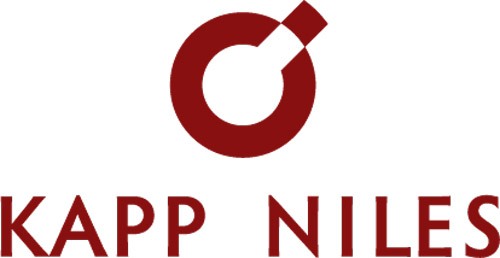Start later to finish on time
Customer project: KAPP NILES Group
Conventional project management software works with milestones, time buffers and priority lists. But how can you reduce complexity, cut project lead times and simplify planning and self-management? In 2014, KAPP decided to achieve these goals by introducing the Critical Chain Project Management (CCPM) methodology. To this end, the MILLIARUM CCPM solution was initially introduced at the Coburg site as a new software tool for this project management method. In addition to the wide range of functions and the simple SAP web interface, the main reason for the decision was the direct integration into the SAP project system (PS) - MILLIARUM CCPM does not require an extra interface.

The KAPP NILES company
KAPP NILES produces machines and tools for the fine machining of gears and profiles in Coburg and Berlin. Customers come from a wide range of industries, such as automotive and commercial vehicle manufacturers, their suppliers, aviation companies, manufacturers of compressors, pumps, industrial gearboxes, wind turbines and railroad technology. The KAPP NILES Group operates at six locations worldwide with around 800 employees and offers its customers high-tech solutions for complex machining tasks.
CCPM as "well-forged glasses" for SAP
In addition to covering the CCPM requirements, the integration into the SAP network planning technology already in use was a decisive factor for the company in choosing the solution from MILLIARUM. On the one hand, it is essentially based on SAP standards with CCPM-relevant enhancements, so that the power user has access to all SAP functions in detail. On the other hand, an easy-to-use, web-based interface also appeals to the occasional user, who will find it easy to use.
KAPP wanted to use the new software to cover other project tasks in addition to network planning, critical chain modeling, mapping and scheduling at the bottleneck and displaying the CCPM buffer. For example, the calculation of project progress and buffer consumption, the creation of the processing sequence for the specialist departments, the generation of a fever chart per project as well as the representation of the entire company using a multi-project fever chart and differentiated graphical capacity evaluations were also to be included. "If we had opted for a tool outside of SAP, the issue of the interface to SAP-PS would have been relevant, and we really struggled with that," says Albert Fischer, Head of Order Management at the KAPP NILES Group, explaining the initial situation.
Paradigm shift in project management
Initially, the changeover process to the new software was less about IT issues and more about moving away from the familiar methods of traditional project management such as schedules, priority lists and milestones.
The changes first had to take place in the mind. The aim was for departments to give up their implicit buffers in the schedule and place them as an overall buffer at the end of the project, which all departments involved can then draw on if necessary. According to the CCPM philosophy, a project should not be started because the deadline requires it, but only when all the necessary prerequisites for uninterrupted processing of a task have been met (full set and avoidance of harmful multitasking).
The respective work steps within the specialist department are also no longer determined by predetermined deadlines, but are controlled at short notice according to project progress and buffer consumption (buffer index). Initially, the changeover process was deliberately not mapped using IT software, but was accompanied by Excel and "paperwork". Based on various experiences with the introduction of other systems (e.g. SAP network planning technology), this made it easier to optimize selected projects in the initial phase.
The introduced software has now become an indispensable part of project management. The CCPM fever charts are updated automatically with the software. "With MILLIARUM and the multi-project management chart, we are able to provide management with an up-to-date overall status from a bird's eye view," says Albert Fischer, explaining his experience with the software. The handling of projects has been significantly simplified, with shorter throughput times taking the pressure off all departments involved.
The traffic light colors of the projects provide a quick overview for the management level and show where urgent action is required. Overloads caused by processing too many projects are avoided, thus reducing the workload. As the architecture of the MILLIARUM software is fully integrated into SAP, there are no costs for the creation and maintenance of interfaces.
Flexible and customer-oriented support
The new software was implemented after an initial kick-off with six two-day workshops, with one or two WebEx meetings taking place in between. The core team was then able to train the end users independently. There are currently 7 power users and 30 end users using the new software, and this will increase to around 100 employees in the final expansion phase. The simple user interface quickly shows the user whether all the data required to start the next process is available (full set).
Support is provided directly by the software developers, who immediately connect to the system after a problem is reported, analyze it and resolve it within a short time. Questions about the application or configuration are answered quickly by e-mail or telephone, without the need for a comprehensive, fee-based consultation.
According to Fischer, MILLIARUM's solutions are particularly suitable for companies that want to introduce CCPM and are already using SAP-PS and network planning technology or want to do so in the future - especially as MILLIARUM can also contribute expertise in these two applications: "Integration in SAP allows you to benefit from all the advantages of SAP-PS and the ease of use via the web interface."
The KAPP NILES Group plans to use the software at its Berlin site and in other areas, such as product development.
Publication of this article: WDF Welt der Fertigung GmbH & Co. KG



